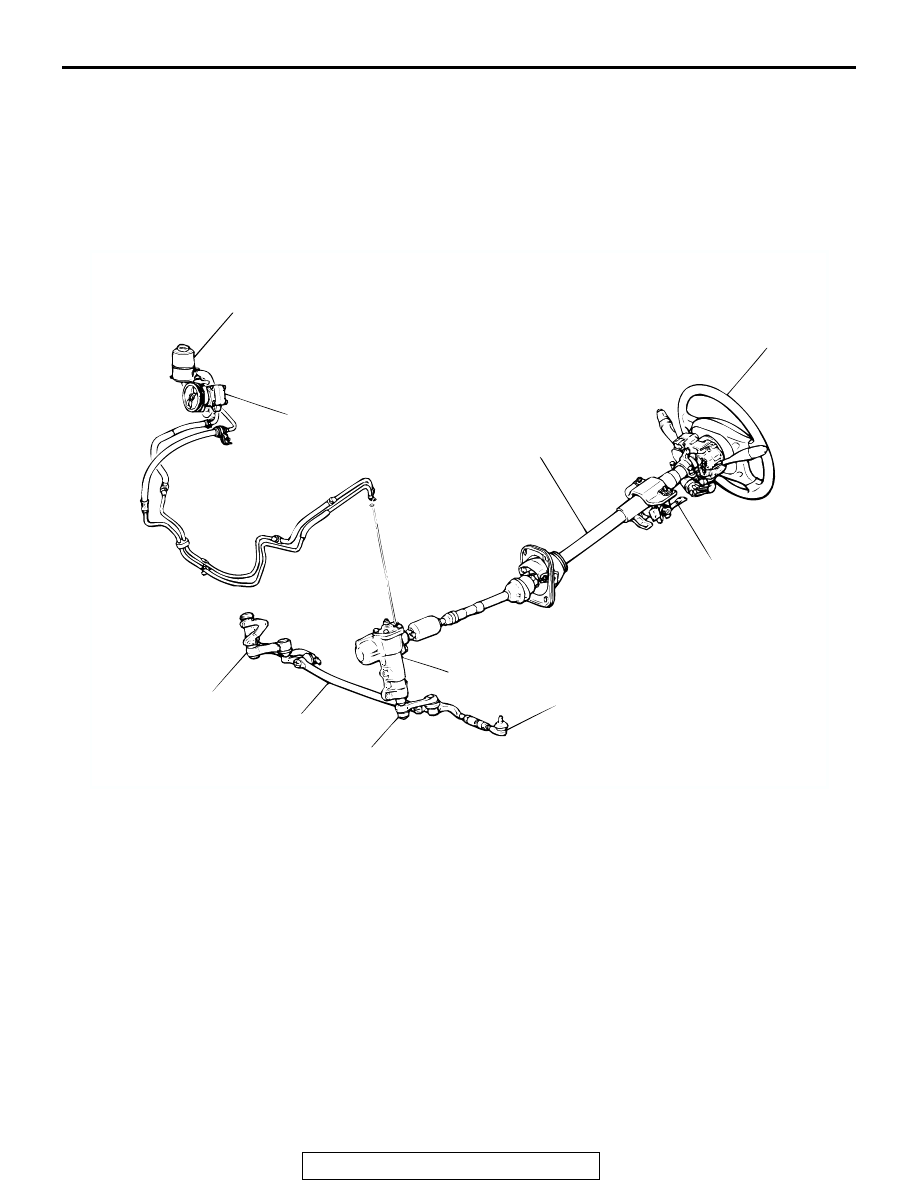Mitsubishi Montero Sport (2004+). Manual - part 820

GENERAL DESCRIPTION
TSB Revision
STEERING
37A-3
GENERAL DESCRIPTION
M1372000100393
The vehicle uses engine speed-responsive hydraulic
power steering.
The steering wheel has four spokes. All vehicles are
equipped with SRS (Supplemental Restraint Sys-
tem).
The steering column has a shock absorber mecha-
nism and a tilt steering mechanism.
A vane-type oil pump with a fluid flow control system
has been included. The steering gear and linkage is
ball and nut type.
CONSTRUCTION DIAGRAM
AC004163
OIL RESERVOIR
OIL PUMP
STEERING COLUMN ASSEMBLY
IDLER ARM ASSEMBLY
RELAY ROD
PITMAN ARM
STEERING GEAR BOX
TIE ROD
TILT STEERING LEVER
STEERING WHEEL
AB